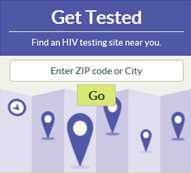LGBT Youth
Historically, YRBS and other studies have gathered data on lesbian, gay, and bisexual youth but have not included questions about transgender and questioning/queer youth. As that changes and data becomes available, this content will be updated to include information regarding transgender and questioning/queer youth.
Most lesbian, gay, bisexual, (LGB) youth are happy and thrive during their adolescent years. Having a school that creates a safe and supportive learning environment for all students and having caring and accepting parents are especially important. Positive environments can help all youth achieve good grades and maintain good mental and physical health. However, some LGB youth are more likely than their heterosexual peers to experience negative health and life outcomes.
For youth to thrive in schools and communities, they need to feel socially, emotionally, and physically safe and supported. A positive school climate has been associated with decreased depression, suicidal feelings, substance use, and unexcused school absences among LGB students.1
Experiences with Violence

Compared with other students, negative attitudes toward LGB persons may put these youth at increased risk for experiences with violence.2 ‘Violence’ can include behaviors such as bullying, teasing, harassment, and physical assault.
According to data from the 2015 national Youth Risk Behavior Survey (YRBS), of surveyed LGB students:
- 10% were threatened or injured with a weapon on school property
- 34% were bullied on school property
- 28% were bullied electronically
- 23% of LGB students who had dated or went out with someone during the 12 months before the survey had experienced sexual dating violence in the prior year
- 18% of LGB students had experienced physical dating violence
- 18% of LGB students had been forced to have sexual intercourse at some point in their lives.3
How CDC Promotes Health Safety Among Youth – Read LGBTQ* Youth Programs-At-A-Glance
Top of PageEffects on Education and Mental Health
Exposure to violence can have negative effects on the education and health of any young person and may account for some of the health-related disparities between LGB and heterosexual youth.4-6 According to the 2015 YRBS, LGB students were 140% (12% v. 5%) more likely to not go to school at least one day during the 30 days prior to the survey because of safety concerns, compared with heterosexual students.3 While not a direct measure of school performance, absenteeism has been linked to low graduation rates, which can have lifelong consequences.
A complex combination of factors can impact youth health outcomes. LGB youth are at greater risk for depression, suicide, substance use, and sexual behaviors that can place them at increased risk for HIV and other sexually transmitted diseases (STDs).3 Nearly one-third (29%) of LGB youth had attempted suicide at least once in the prior year compared to 6% of heterosexual youth.3 In 2014, young gay and bisexual men accounted for 8 out of 10 HIV diagnoses among youth.7
What Schools Can Do
Schools can implement evidence-based policies, procedures, and activities designed to promote a healthy environment for all youth, including LGB students. For example, research has shown that in schools with LGB support groups (such as gay-straight alliances), LGB students were less likely to experience threats of violence, miss school because they felt unsafe, or attempt suicide than those students in schools without LGB support groups.8 A recent study found that LGB students had fewer suicidal thoughts and attempts when schools had gay-straight alliances and policies prohibiting expression of homophobia in place for 3 or more years.9
To help promote health and safety among LGB youth, schools can implement the following policies and practices (with accompanying citations)
- Encourage respect for all students and prohibit bullying, harassment, and violence against all students.10
- Identify “safe spaces”, such as counselors’ offices or designated classrooms, where LGB youth can receive support from administrators, teachers, or other school staff.11
- Encourage student-led and student-organized school clubs that promote a safe, welcoming, and accepting school environment (e.g., gay-straight alliances or gender and sexuality alliances, which are school clubs open to youth of all sexual orientations and genders).11-13
- Ensure that health curricula or educational materials include HIV, other STD, and pregnancy prevention information that is relevant to LGB youth (such as ensuring that curricula or materials use language and terminology.11,14
- Provide trainings to school staff on how to create safe and supportive school environments for all students, regardless of sexual orientation or gender identity, and encourage staff to attend these trainings.11,15
- Facilitate access to community-based providers who have experience providing health services, including HIV/STD testing and counseling, social, and psychological services to LGBTQ youth.11,16
More Resources for Educators and School Administrators
Top of PageWhat Parents Can Do
Positive parenting practices, such as having honest and open conversations, can help reduce teen health risk behaviors. How parents engage with their LGB teen can have a tremendous impact on their adolescent’s current and future mental and physical health.17 Supportive and accepting parents can help youth cope with the challenges of being an LGB teen.18 On the other hand, unsupportive parents who react negatively to learning that their daughter or son is LGB can make it harder for their teen to thrive. Parental rejection has been linked to depression, use of drugs and alcohol, and risky sexual behavior among teens.19,20
To be supportive, parents should talk openly and supportively with their teen about any problems or concerns. It is also important for parents to watch for behaviors that might indicate their teen is a victim of bullying or violence―or that their teen may be victimizing others. If bullying, violence, or depression is suspected, parents should take immediate action, working with school personnel and other adults in the community.
Top of PageWays Parents Can Influence the Health of Their LGB Youth
More research is needed to better understand the associations between parenting and the health of LGB youth. The following are research-based steps parents can take to support the health and well-being of their LGB teen:
Talk and listen. Parents who talk with and listen to their teen in a way that invites an open discussion about sexual orientation can help their teen feel loved and supported. Parents should have honest conversations with their teens about sex and how to avoid risky behaviors and unsafe situations.
Provide support. Parents who take time to come to terms with how they feel about their teen’s sexual orientation will be more able to respond calmly and use respectful language. Parents should develop common goals with their teen, including being healthy and doing well in school.
Stay involved. Parents who make an effort to know their teen’s friends and know what their teen is doing can help their teen stay safe and feel cared about.
Be proactive. Parents can access many organizations and online information resources to learn more about how they can support their LGB teen, other family members, and their teen’s friends.
Get more information from the CDC Fact Sheet: Parents’ Influence on the Health of Lesbian, Gay, and Bisexual Teens [PDF – 254 KB].
More resources for LGBTQ youth and their friends can be found on CDC’s web page
References
- Espelage DL, Aragon SR, Birkett M. Homophobic teasing, psychological outcomes, and sexual orientation among high school students: What influence do parents and schools have? [PDF – 104 KB] School Psychology Review 2008;37:202–216.
- Coker TR, Austin SB, Schuster MA. The health and health care of lesbian, gay, and bisexual adolescents. Annual Review of Public Health 2010;31:457–477.
- Kann L, Olsen EO, McManus T, et al. Sexual Identity, Sex of Sexual Contacts, and Health-Related Behaviors Among Students in Grades 9-12 – United States and Selected Sites, 2015. MMWR Surveill Summ 2016; 65(9): 1-202.
- Bouris A, Everett BG, Heath RD, Elsaesser CE, Neilands TB. Effects of Victimization and Violence on Suicidal Ideation and Behaviors Among Sexual Minority and Heterosexual Adolescents. LGBT Health 2016; 3(2): 153-61.
- Huebner DM, Thoma BC, Neilands TB. School victimization and substance use among lesbian, gay, bisexual, and transgender adolescents. Prev Sci 2015; 16(5): 734-43.
- Russell ST, Ryan C, Toomey RB, Diaz RM, Sanchez J. Lesbian, gay, bisexual, and transgender adolescent school victimization: implications for young adult health and adjustment. Journal of School Health. 2011;81(5):223-30.
- Centers for Disease Control and Prevention. HIV Surveillance Report, 2014; vol. 26. Published November 2015. Accessed October 2016.
- Goodenow C, Szalacha L, Westheimer K. School support groups, other school factors, and the safety of sexual minority adolescents. Psychology in the Schools 2006;43:573–89.
- Saewcy EM, Konishi C, Rose HA, Homma Y. School-based strategies to reduce suicidal ideation, suicide attempts, and discrimination among sexual minority and heterosexual adolescents in Western Canada. International Journal of Child, Youth and Family Studies 2014;1:89‒112.
- Hatzenbuehler ML, Keyes KM. Inclusive anti-bullying policies reduce suicide attempts in lesbian and gay youth. J Adolesc Health. 2013; 53(1 suppl):S21—S26.
- Hatzenbuehler ML, Birkett M, Van Wagenen A, Meyer IH. Protective school climates and reduced risk for suicide ideation in sexual minority youth. Am J Pub Health. 2014;104(2):279-286.
- Saewcy EM, Konishi C, Rose HA, Homma Y. School-based strategies to reduce suicidal ideation, suicide attempts, and discrimination among sexual minority and heterosexual adolescents in Western Canada. International Journal of Child, Youth and Family Studies 2014;1:89‒112.
- Heck NC, Livingston NA, Flentje A, Oost K, Stewart BT, Cochran BN. Reducing risk for illicit drug use and prescription drug misuse: High school gay-straight alliances and lesbian, gay, bisexual, and transgender youth. Addictive Behaviors. 2014;39:824-828.
- Mustanski B, Greene GJ, Ryan D, Whitton SW. Feasibility, Acceptability, and Initial Efficacy of an Online Sexual Health Promotion Program for LGBT Youth: The Queer Sex Ed Intervention. J Sex Res 2015; 52(2): 220-30.
- De Pedro KT, Esqueda MC, Gilreath TD. School Protective Factors and Substance Use Among Lesbian, Gay, and Bisexual Adolescents in California Public Schools. LGBT Health. 2017 Jun;4(3):210-216. doi: 10.1089/lgbt.2016.0132. Epub 2017 May 12.
- José A. Bauermeister, Emily S. Pingel, Laura Jadwin-Cakmak, Gary W. Harper, Keith Horvath, Gretchen Weiss, and Patricia Dittus. Acceptability and Preliminary Efficacy of a Tailored Online HIV/STI Testing Intervention for Young Men who have Sex with Men: The Get Connected! Program. AIDS Behav. 2015 Oct; 19(10): 1860–1874.
- Bouris A, Guilamo-Ramos V, Pickard A, Shiu C, Loosier PS, Dittus P, Gloppen K, Waldmiller JM. A systematic review of parental influences on the health and well-being of lesbian, gay, and bisexual youth: time for new public health research and practice agenda. Journal of Primary Prevention 2010;3:273–309.
- Ryan C, Russell ST, Huebner D, Diaz R, Sanchez J. Family acceptance in adolescence and the health of LGBT young adults. J Child Adolesc Psychiatr Nurs 2010; 23(4): 205-13.
- Ryan C, Huebner D, Diaz RM, Sanchez J. Family rejection as a predictor of negative health outcomes in white and Latino lesbian, gay, and bisexual young adults. Pediatrics 2009;123:346–352.
- Puckett JA, Woodward EN, Mereish EH, Pantalone DW. Parental Rejection Following Sexual Orientation Disclosure: Impact on Internalized Homophobia, Social Support, and Mental Health. LGBT Health 2015; 2(3): 265-9.

Get Tested
Find an HIV testing site near you.
- Page last reviewed: June 21, 2017
- Page last updated: June 21, 2017
- Content source:


 ShareCompartir
ShareCompartir